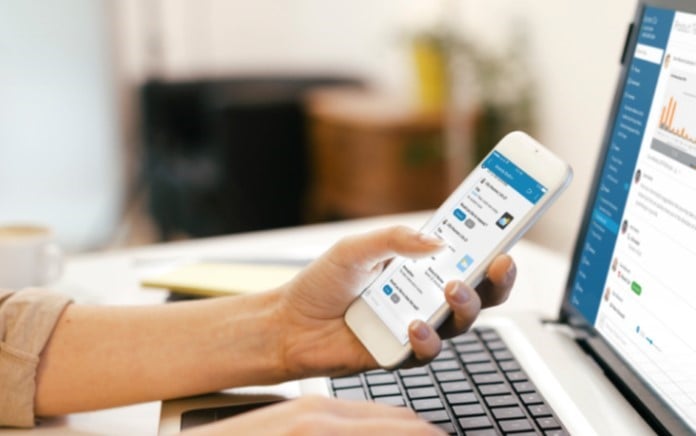I took part in a webinar recently with RingUC’s CEO Justin Dunwoody where we discussed the issue of managing remote teams at a time when the majority of our employees are working from home and dealing with a fundamentally disrupted life.
With the extent of COVID-19 social distancing rules and business lockdowns, we are truly in unprecedented times, which is creating a lot more anxiety for our workers. As Justin said during the webinar, “we are all human, and we are all responding differently to the situation”.
We used to spend roughly a third of our time on personal activities, a third sleeping and a third at work. Now all three are happening together at home, and more and more people are uncertain about what the future holds.
Personally, working from home was a big a challenge for me in that first week. How do I get up and get motivated? I’d say I’m one of the most motivated people there is, and I’m highly effective at what I do. I’ve never jumped out of bed and said ‘I don’t feel like going to work today’ – but because I didn’t initially have a workspace of my own at home, I found it difficult to get settled and be productive.
This anxiety is something one of our customers in the employee assistance program industry, AccessEAP, is responding to right now.
So, as a leader, how do you help your team get through this?
Up until now, the business world has been focused on solving the issue of ‘how do I build an office, and make sure my office environment and our culture is highly successful, and that everyone in the office is at optimal performance?’
Technology to enable this has been based on 95% of my workforce being in the office, collaborating around a physical meeting space. My telepresence in the boardroom needs to connect to telepresence systems in other offices; I need smaller and larger meeting rooms kitted out with collaborative tools to enable both on-site and remote workers to contribute effectively. In fact, our office spaces overall are designed for collaboration – common areas, breakout spaces and social activities.
From a unified communications (UC) perspective – voice, PBX, video, chat, etc. – in a normal disaster scenario, our business continuity plan would be to pick everything up and go to another location and run things from there.
What most of us haven’t foreseen is that 100% of our workforce now have to be able to operate in a home and remote environment, often without all the tools they would have access to in an office. A lot of workers are using desktops and not laptops in the office, or don’t have a company-supplied smart phone or mobile plan. Now I need to be able to run all my services for workers over standard Internet, and either work with the devices my team has access to or quickly supply them with new equipment.
UC, it turns out, is critical in this scenario. As Justin said on the webinar, UC “is incredibly useful in keeping a team working in a rhythm and maintaining a cadence that we would typically see in an office environment”.
At RingCentral, one of the first things I did was approve all my team members to go and get the best and fastest Internet plan they can – because they have to have a great experience with their customers.
We also worked out in the first week that we had to put in a standing weekly meeting via video. In the early days, our people were looking for guidance and answers on what they should and should not be doing, especially with regards to travel, which had played a big part in a lot of our team’s daily work life. This meeting moved quickly to a daily 30-minute ‘happy hour’ huddle, featuring quick updates, celebration of wins and other achievements, and answering any questions from the team.
Justin’s view is that as leaders “we must communicate openly and frequently with our people; and make ourselves accessible and visible, even if that is virtually”.
We must cut down and rationalise on the side projects we are used to doing, and now prioritise the strategic items in our day down to just a few – and your team must be number one. That’s the bottom line.
Most of my job as a manager is working with people. I started calling every member of my team every day. That could just be a ten- or 15-minute call or video catchup, and very soon your day can get away from you.
Rather than my weekly team call, which we’d typically do in a meeting room with a few people dialling in, I’ve said ‘put your runners on’ and ‘walk your dog’ so we can all connect together and get outside with some exercise while chatting to each other via video.
The good news is that with the right technology and support we can all adapt very quickly. I’ve set up a nice workspace in my courtyard, so I can separate my work from home life. My team is happy and productive with our new approach to communicating, where we can still connect with each other in a way that replicates the interactions we used to have in the physical office.
What’s really important is that we acknowledge the personal toll that this current pandemic is having on all of us, and we give our people the space and support they need to respond to this in their own way.
Stay home and stay safe.
Ben Swanson
Originally published 29 Apr, 2020





